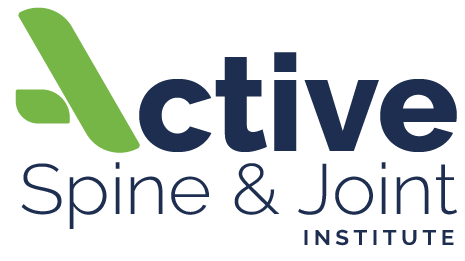Discover the Best Sleeping Positions for a Healthier You
We spend about a third of our lives asleep or resting, so it's essential to find a sleep position that supports our body's natural healing processes. The right sleeping position can promote healthy spine alignment from your head to your hips, which can prevent morning aches and pains and ensure a good night's sleep.
Why Sleep Position Matters
During sleep, our bodies work hard to repair and restore. However, if our sleep position doesn't support the spine's natural curvature, it can lead to pain or stiffness in the back, arms, or shoulders, contributing to lower-quality sleep. That's why it's crucial to choose a position that assists in physical recovery and reduces stress on the spine.
Do you wake up feeling just as tired as when you first hit the pillow? Bad sleep posture could be the culprit. Quality sleep is crucial for your overall health, and optimizing your sleep posture can help you achieve the rejuvenating rest you need.
Coffee Won’t Cut It—Get Some Sleep!
Did you know that one in three American adults don't get enough sleep? The numbers are even worse for adolescents, with 50% of U.S. teens and 73% of high school students falling short on sleep. Adults need seven to eight hours, teens need eight to ten, and kids ages six to twelve need nine to twelve hours of sleep per night.
Lack of sleep takes a toll on your body, leading to both short- and long-term health issues. It can impair mental health, and concentration, and is linked to obesity, diabetes, heart disease, and certain cancers. Fatigue can also increase the risk of falls and car accidents.
During sleep, your body enters an active recovery mode, repairing and healing itself, expelling toxins, and processing information to form long-term memories. Quality sleep involves several stages and cycles that allow your body to perform essential functions such as regulating brain activity, heart rate, blood pressure, muscle tone, and hormonal functions.
Potential Causes of Restlessness
It's normal to shift positions at night, but fully waking up several times can be detrimental. Common causes include stress, a crying baby, or too much caffeine. Lesser-known disruptors include nutrient imbalances or deficiencies that cause cramping or affect neurotransmitter production, and blue light from phones, tablets, and TVs that interrupt melatonin production.
Tips for Sleep Posture and Positioning
Good sleep posture can prevent discomfort and improve sleep quality. Here are some tips:
Support Your Head and Neck: Use one good pillow to support the base of your skull, allowing for the natural curve of your neck. Unless medically necessary, avoid propping up your torso.
Align Your Spine: Ensure your spine remains in alignment. Avoid awkward leg positions that can twist your back.
Back Sleepers: Place a small support under your knees to relieve pressure on your lower back.
Side Sleepers: Use a body pillow between your knees to reduce stress on your lower back and hips.
Avoid Jerky Movements: When changing positions, shift your spine carefully.
Morning Routine: When getting out of bed, avoid jerking motions. Roll to the side with bent knees and gently swing your legs to the floor.
Avoid Stomach Sleeping: This can strain your lower back and neck.
How Chiropractic Care Can Improve Sleep
Natural sleep remedies are essential, especially with the rise of dependency on harmful prescription sleep aids. A licensed Doctor of Chiropractic (DC) can help identify causes of sleep issues and provide pain relief measures, reducing the need for painkillers or sleep medications.
Chiropractors can recommend individualized sleep posture and relaxation strategies, increase joint mobility, and reduce pain. They can also suggest dietary improvements and supplements to aid relaxation and improve sleep quality.
We spend about a third of our lives sleeping, so it's crucial to find a sleep position that supports our body's natural healing processes. The right sleeping position promotes healthy spine alignment, prevents morning aches and pains, and ensures a good night's sleep.
Why Sleep Position Matters
If your sleep position doesn't support the spine's natural curvature, it can lead to pain or stiffness in the back, arms, or shoulders, contributing to lower-quality sleep. A good sleep position assists in physical recovery and reduces stress on the spine.
The Best Sleeping Positions
Sleeping on Your Side:
Benefits: Promotes spinal alignment, reduces heartburn and snoring, and alleviates back pain.
Tips: Use pillows for support, placing one between your knees and another under your head. The left side is preferable for pregnant women and those with acid reflux.
Drawbacks: This may cause shoulder pain or facial wrinkles. Shift positions occasionally to mitigate these issues.
Sleeping on Your Back:
Benefits: Helps with neck pain and nasal congestion, prevents facial wrinkles, and distributes body weight evenly.
Tips: Use a supportive pillow for your neck and head. If congested, prop yourself up slightly.
Drawbacks: Not recommended for pregnant women, snorers, or those with sleep apnea. May cause back pain if the mattress lacks support.
Sleeping on Your Stomach:
Benefits: Can reduce snoring by opening the airway.
Drawbacks: Least supportive for the back, can cause neck and back pain, increases the risk of facial wrinkles.
Tips: Use a thin pillow or no pillow to minimize neck strain. Place a pillow under your hips to maintain spinal alignment.
Choosing the Right Position for You
The best sleep position is one that allows you to wake up feeling refreshed and pain-free. If you're experiencing discomfort, experiment with a new position. Be patient and use supportive pillows and a suitable mattress to ease the transition.
For more personalized advice on improving your sleep, visit Active Spine and Joint Institute. Our chiropractic care can help you find the perfect sleep posture and provide holistic solutions for better health. Visit www.activesj.com or call 609-886-8585 to learn more.
